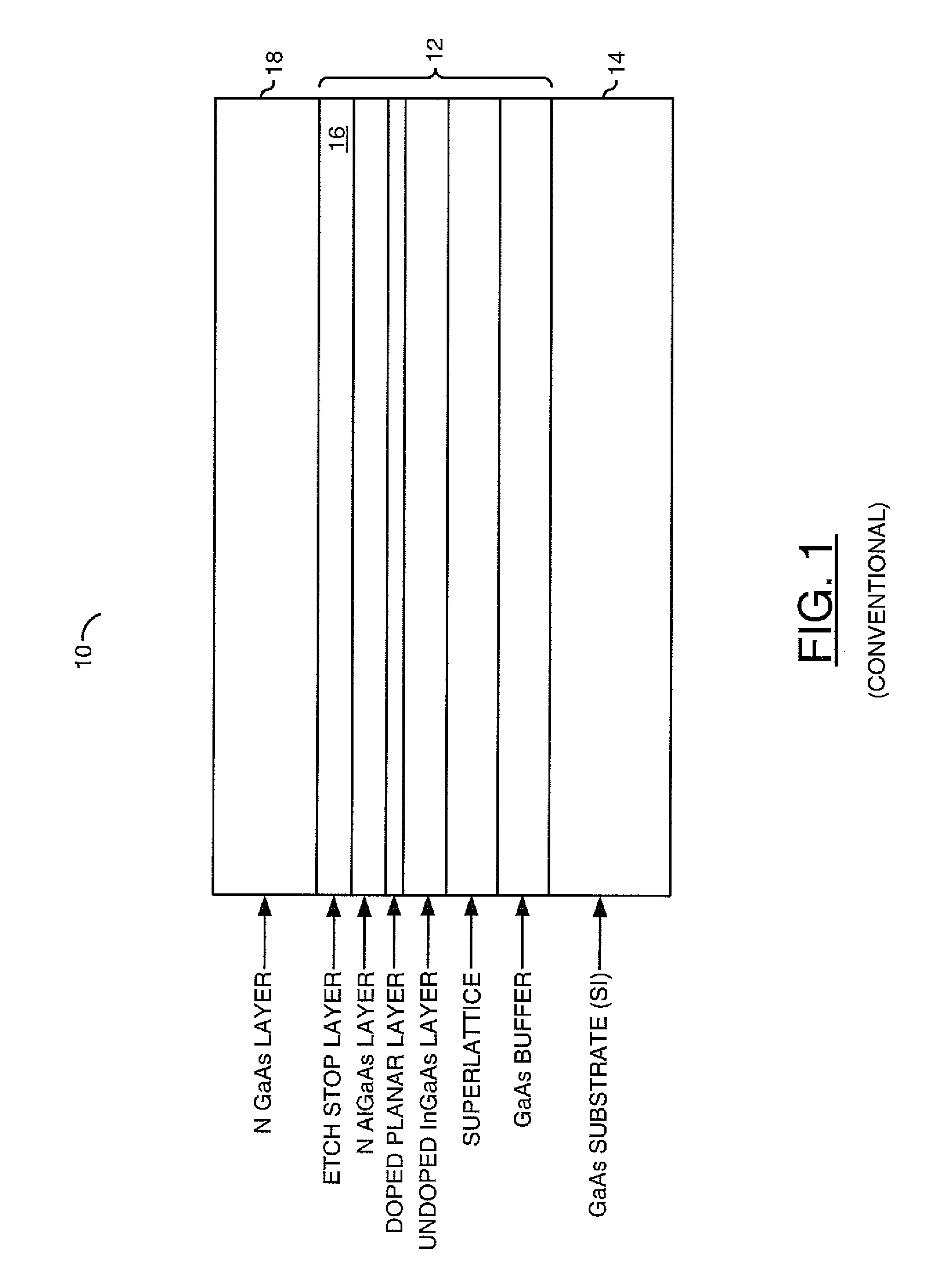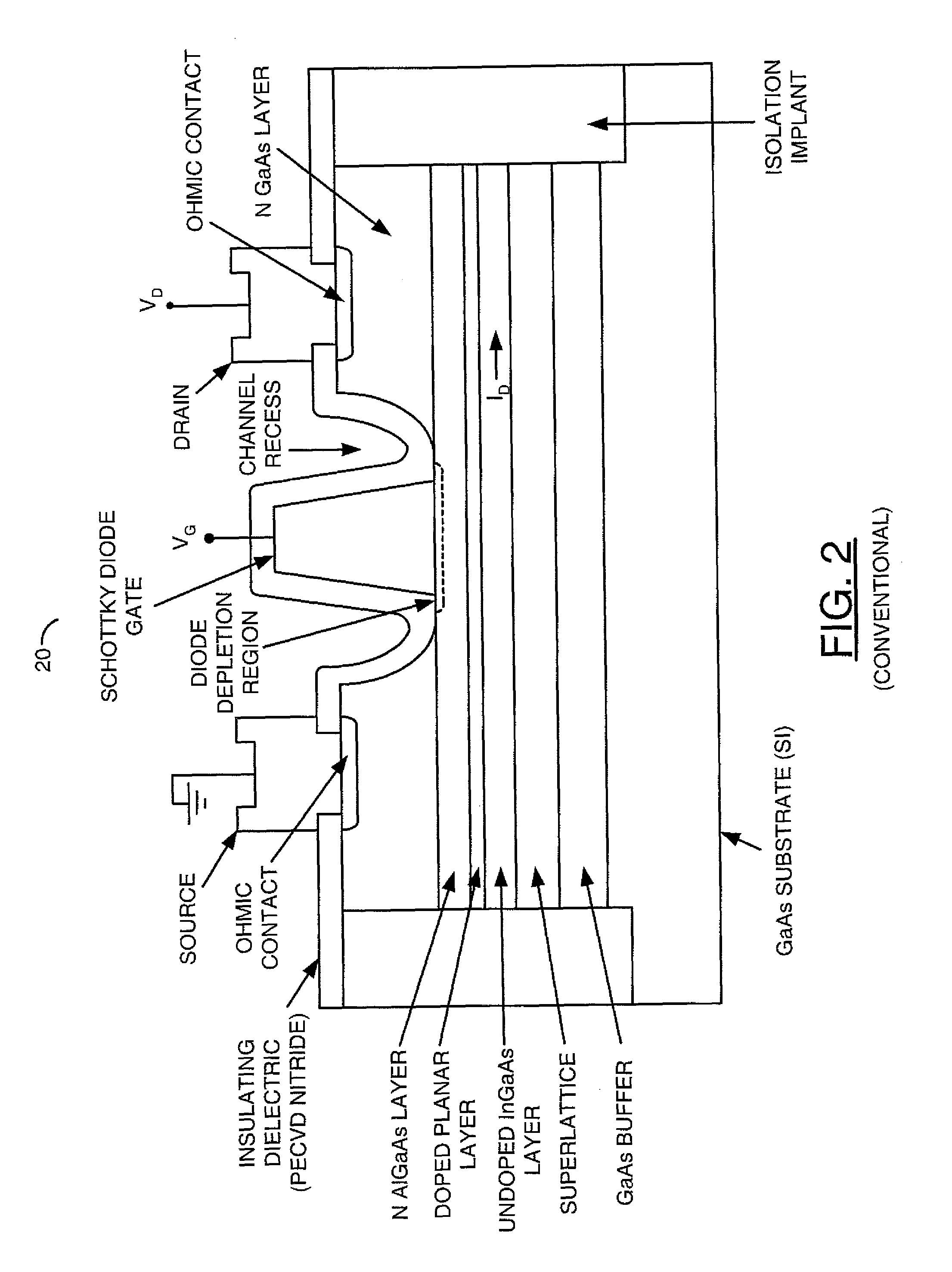Structure of a pHEMT transistor capable of nanosecond switching
a technology of phemt transistor and structure, which is applied in the direction of basic electric elements, electrical apparatus, and semiconductor devices, can solve the problems of conventional phemt structure, and achieve the effects of minimizing switching delays, shortening device gate lag times, and minimizing switching delays
- Summary
- Abstract
- Description
- Claims
- Application Information
AI Technical Summary
Benefits of technology
Problems solved by technology
Method used
Image
Examples
first embodiment
[0017]Referring to FIG. 4, a block diagram of an apparatus 100 is shown. The apparatus (or device) 100 may implement a Gallium Arsenide (GaAs) pseudomorphic High Electron Mobility Transistor (pHEMT). The apparatus 100 generally comprises a substrate (or base) 102, a layer (or region) 104, a layer (or region) 106, a layer (or region) 108, a layer (or region) 109, a layer (or region) 110, a layer (or region) 112, a layer (or region) 114, a layer (or region) 115, multiple contacts (or connections) 116, a layer (or region) 118, one or more zones (or volumes) 120, a layer (or region) 122 and a layer (or region) 124. The layers 104 to 110 may be referred to as epitaxial layers 126. The layer 122 may be patterned to create a source 128 and a drain 130 of the transistor. The layer 124 may be patterned to create a gate 132 of the transistor. A channel recess 134 may be formed in the layers 114 and 115. The gate 132 may be formed on the layer 112 within the channel recess 134. The apparatus 1...
second embodiment
[0031]Referring to FIG. 5, a cross-sectional view of an apparatus 160 is shown in accordance with a preferred embodiment of the present invention. The apparatus (or device) 160 may implement a GaAs pHEMT. The apparatus 160 generally comprises the substrate 102, the layer 104, the layer 106, the layer 108, the layer 109, the layer 110, the layer 112, the layer 114, the layer 115, the contacts 116, the layer 118, the zones 120, the layer 122 and the layer 124. The layers 104 to 110 may be referred to as the epitaxial layers 126. The layer 122 may be patterned to create the source 128 and the drain 130 of the transistor. The layer 124 may be patterned to create the gate 132a of the transistor. Two or more channel recesses 134a and 134b may be formed in the layers 114 and 115. The gate 132a may be formed on the layer 112 partially within the channel recesses 134a and 134b. The apparatus 160 is generally configured as a depletion mode device. The apparatus 160 may be normally “on” at no ...
PUM
 Login to View More
Login to View More Abstract
Description
Claims
Application Information
 Login to View More
Login to View More - R&D
- Intellectual Property
- Life Sciences
- Materials
- Tech Scout
- Unparalleled Data Quality
- Higher Quality Content
- 60% Fewer Hallucinations
Browse by: Latest US Patents, China's latest patents, Technical Efficacy Thesaurus, Application Domain, Technology Topic, Popular Technical Reports.
© 2025 PatSnap. All rights reserved.Legal|Privacy policy|Modern Slavery Act Transparency Statement|Sitemap|About US| Contact US: help@patsnap.com



